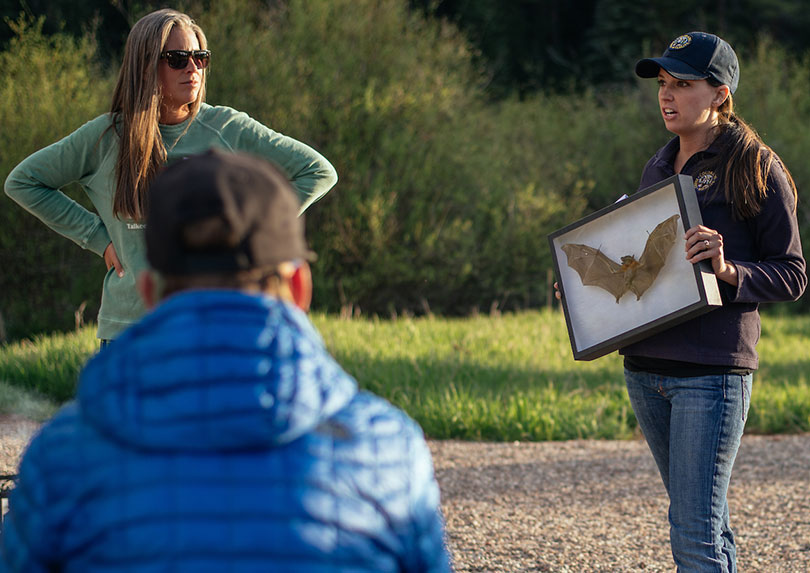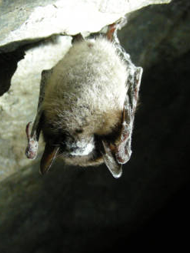Page Content

Overview
Bats remain one of the most mysterious land mammals, especially in Colorado, where 18 species spend at least part of the year. For example, the little brown bats in our state seem to hibernate differently than those on the east coast, and we are constantly learning about their whereabouts, habitats and behaviors. Our current research suggests that bat populations in Colorado are doing quite well.
 Why Are Bats Important?
Why Are Bats Important?
One little brown bat can eat up to 18,000 small insects (like mosquitoes) each night. Their economic impact is estimated to be billions of dollars, and much of the agricultural industry relies on their insect control.
Beyond their economic impact, bats flaunt some impressive adaptations. They are the only mammal that truly flies, which requires a very unique anatomy. Their upside-down lifestyle requires adaptations in their “feet” to consistently grip. If people hanged upside down for even an hour, we’d lose consciousness; bats have developed amazing blood pressure accommodations to fit the lifestyle.
What Are The Associated Challenges?
What Is CPW Doing?
We are currently involved in a monitoring partnership called the
North American Bat Monitoring Program (NA Bat). The program utilizes acoustic surveys to collect information on bat populations without interfering with their behaviors. We also are using PIT tags, like the chips put in household pets, to monitor a number of maternity sites. While data collection will take years, we’ve already learned new information about Colorado’s bat
 population, the most heartening of which is that the population appears larger and more widespread than we’d thought. This is an excellent start to learning more about the species, but we’ve got lots of problem-solving and technological innovation left to do.
population, the most heartening of which is that the population appears larger and more widespread than we’d thought. This is an excellent start to learning more about the species, but we’ve got lots of problem-solving and technological innovation left to do.
Our priorities also include learning more about bats so that we are prepared for the potential spread of White-nose Syndrome. Finding and monitoring bats is crucial to this effort, but also comes with its own challenges. Because bats are small, flying mammals, much of the equipment used to track other species is too heavy for them. And during the winter, Colorado bats are very elusive, choosing to hibernate in small groups often in locations that are inaccessible to people.

